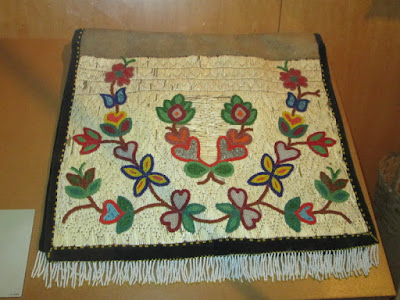Today's History Lesson:
Grand Portage, Mn
Grand Portage was the key geographical portal in the 18th century fur trade for nearly 75 years. It was the Rendezvous point for the French, English, Canadian, Indian and the mixed-blood voyageurs.
This day was cold and rainy in mid-June and as I shivered I thought how hard it would be visiting here in mid-February.
Suddenly Leonardo DiCaprio's movie, "The Revenant" took on more meaning to me.
The North West Company, based in Montreal constructed its inland headquarters here in 1783.
There is little of the original site but these buildings and how they were constructed are as accurate as the records from that time would allow.
They were built entirely with tools known for that time and from materials natural to the area.
About 6000 BC: First evidence of Native people of the North Shore using copper tools.
About 1000 BC: the first evidence of pottery use. Stone net sinkers from this era demonstrate increasing harvest of fish.
1500-1600 AD: Ojibwa people immigrate to North Shore from around Sault Ste Marie and become established at Grand Portage.
1650: Ojibwa begin making trips to Montreal to trade with the French.
1670: Hudson's Bay Company is founded in England specifically to organize and conduct fur trade business in North America.
The North West Company began as a loose association of Montreal-based merchants--most of them of Scottish origin--who wanted to break the monopoly that the Hudson's Bay Company held over the fur trade. In 1784 the newly formed North West Company established its inland headquarters here at Grand Portage.
The company director, Simon McTavish recognized that the 8 1/2 mile portage from Lake Superior to the Pigeon River was a key geographical link, allowing traders or voyageurs to penetrate into the upper country of northern and western Canada where rich fur resources were still relatively untapped.
Swiftly, the Company became a dominant force, controlling nearly 80 percent of the North American fur trade by 1800.
One of those hats cost $15.00 at that time--more than a year's wages for the common workers of the era.
The appetite for furs in the European market was insatiable.
I think I have figured out why England lost the Revolutionary War. The colonists, trappers, traders, and voyageurs were trudging through the wilderness making do with very little and surviving the elements by sheer grit and determination while the Europeans were busy working hard at keeping their prissy fur-lined jackets fashionable and pristine.
(Breechcloth)
1736: The fragile alliance between the Ojibwe and the Dakota is broken and war breaks out. The Ojibwe shift alliances from the Dakota to the Cree and the Assiniboine.
(Bandoleer Bag)
1754-60: The French and Indian War is fought in the eastern parts of North America, disrupting the fur trade, as French traders and voyageurs are called east to fight the British.
1760: George III is crowned King of England. He will reign for nearly 60 years, during which he will lose his kingdom's American Colonies in a calamitous revolutionary war.
The Great Hall
This is a reconstruction of one of 17 buildings within the stockade some two centuries ago. It was originally built in 1785 and was the central focus of the annual Northwest Company rendezvous until 1802.
Over 100 employees dined here and the company partners held business meetings.
The type of china you dined from told your rank within the organization.
And much like the china, the luxury of the sleeping quarters also told the rank.
The Kitchen:
Here food was prepared for the proprietors, clerks, guides and interpreters. Among the main preparations were fish, venison, corn, peas and potatoes.
Bread was made in the recesses of the fireplace...
...while milk, butter, cheese and vegetables were stored in the dry well to the rear.
This was where all the tools, tables, buckets, churns, chairs and canoes are made...
...in exactly the same way they were made in the 1700s and 1800s.
And here is the craftsman that is doing it today and that is a rolling pin he is fabricating.
Most remarkable of all--he designed and built these canoes.
The hardy French-Canadians were more at home in birch cloth canoes than on land.Their reputation for working energetically without complaint, chanting nostalgic French songs as they paddled, and vigorously defending the honor of their profession has earned them the status of folk heroes.
My Canoe
Note the name on the gas station.
(All the wording in Italics is from the material put out by the Grand Portage National Monument)

















































